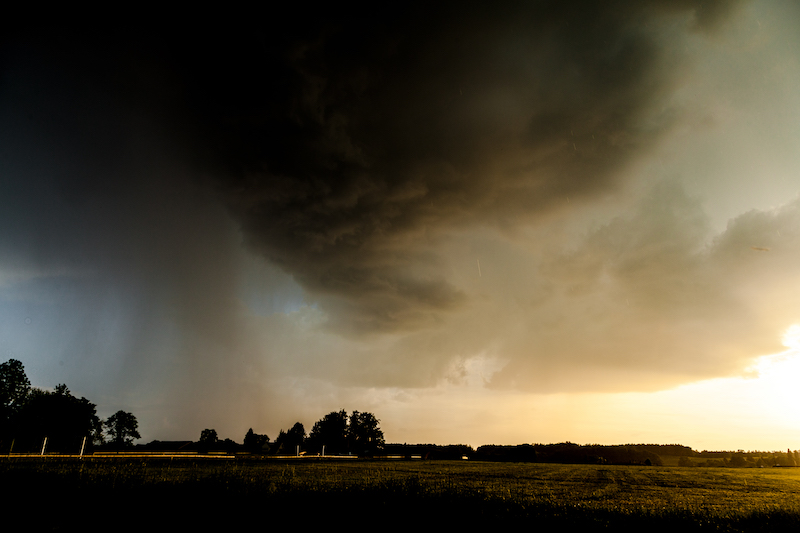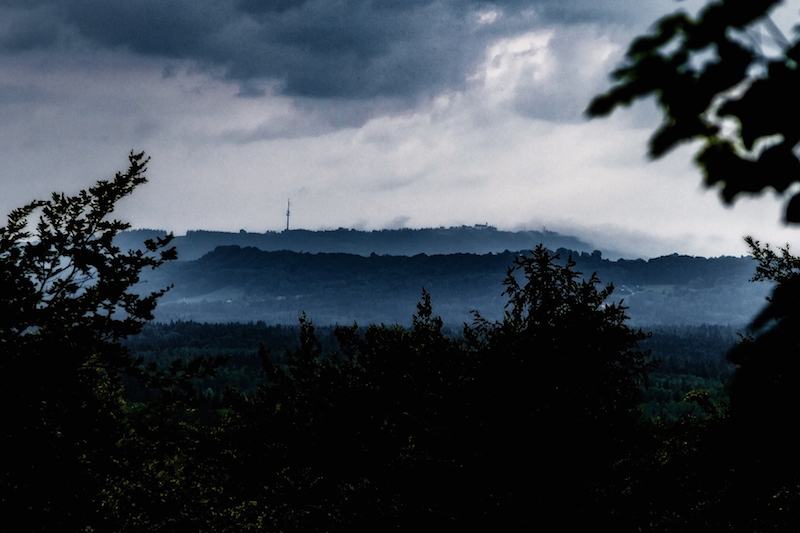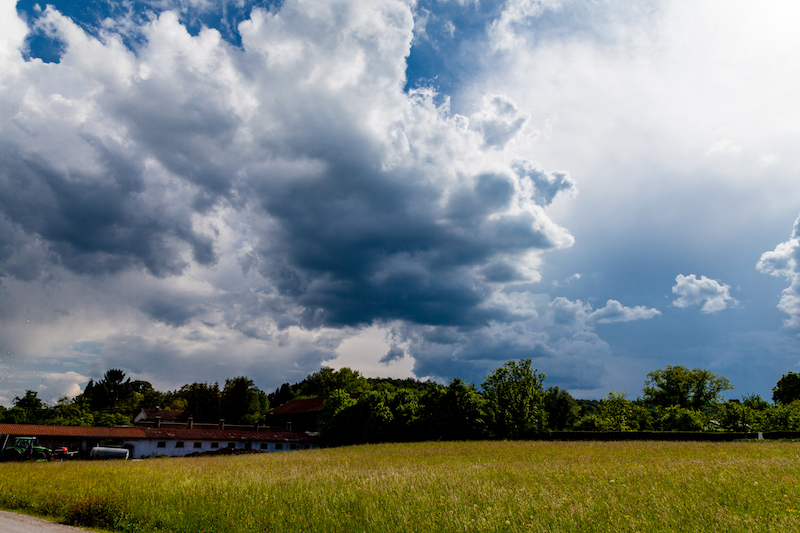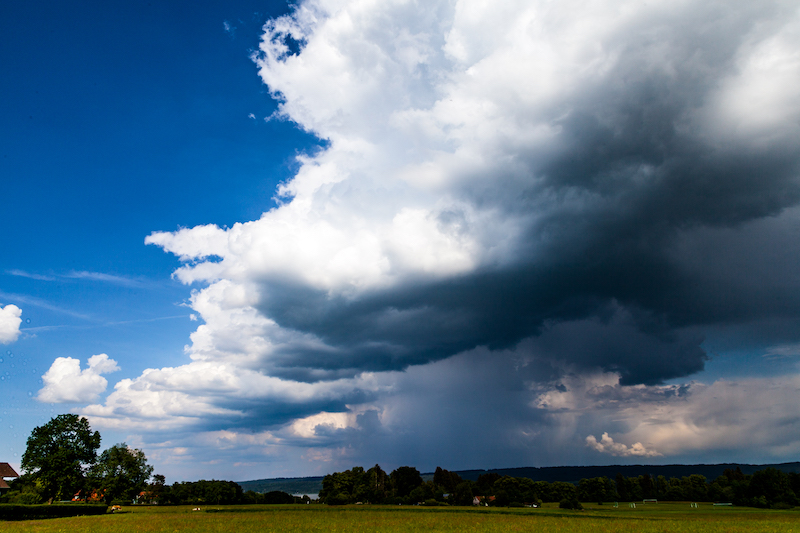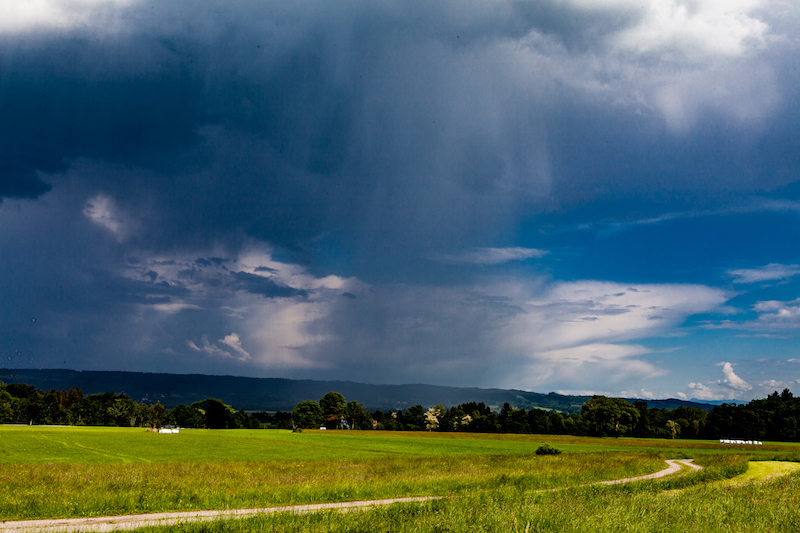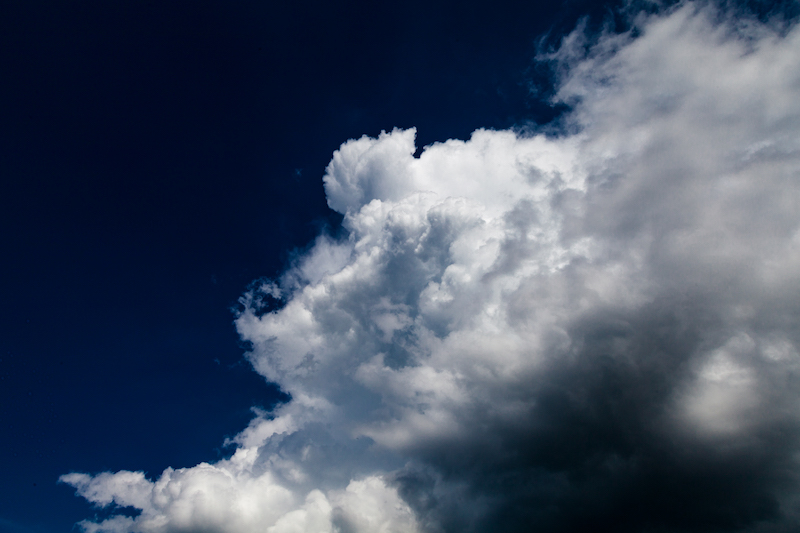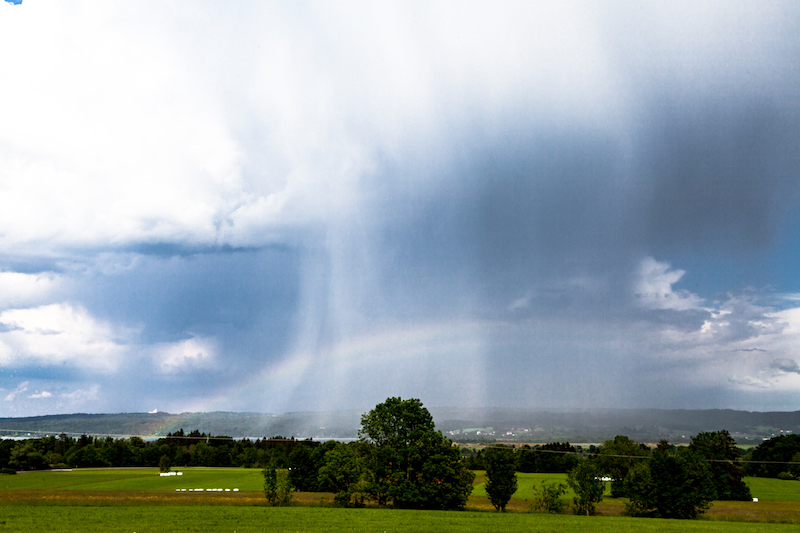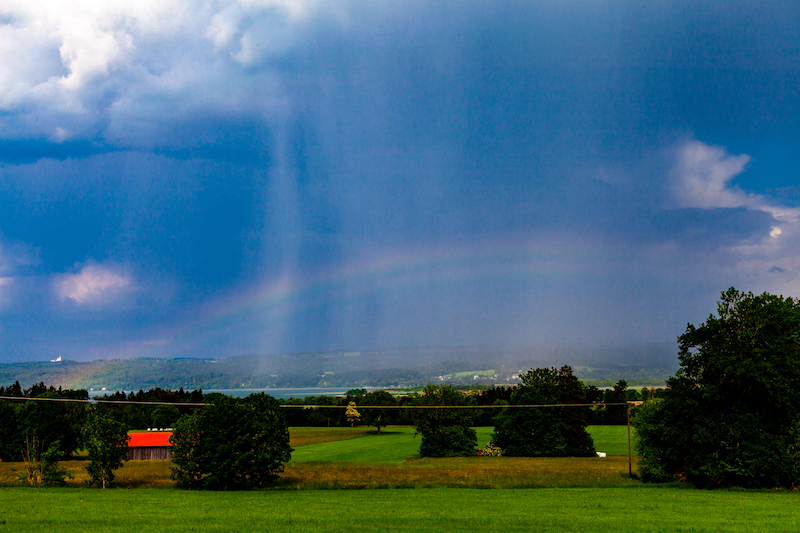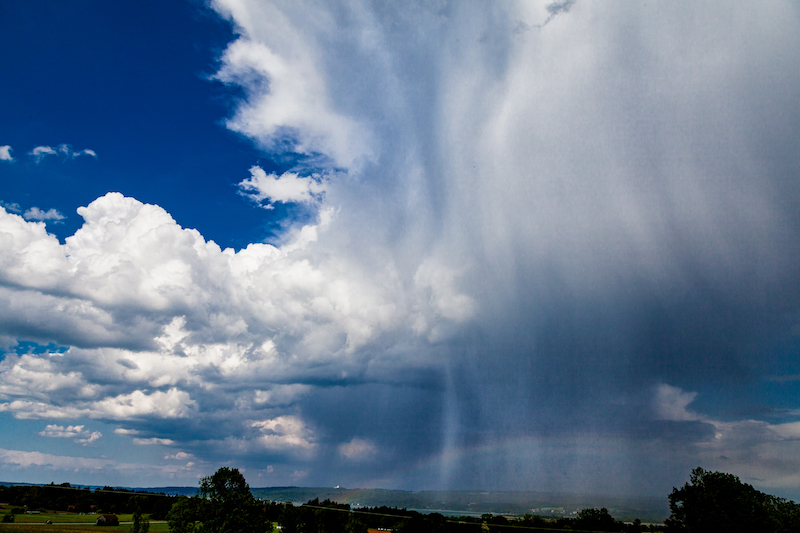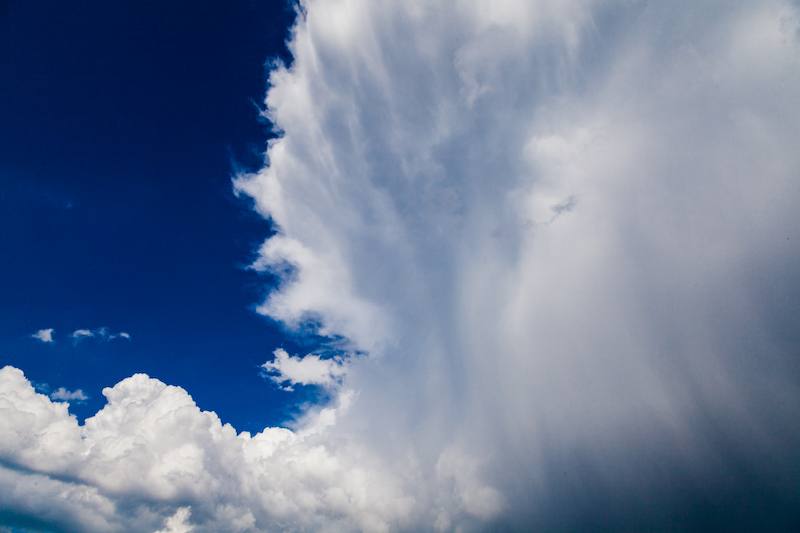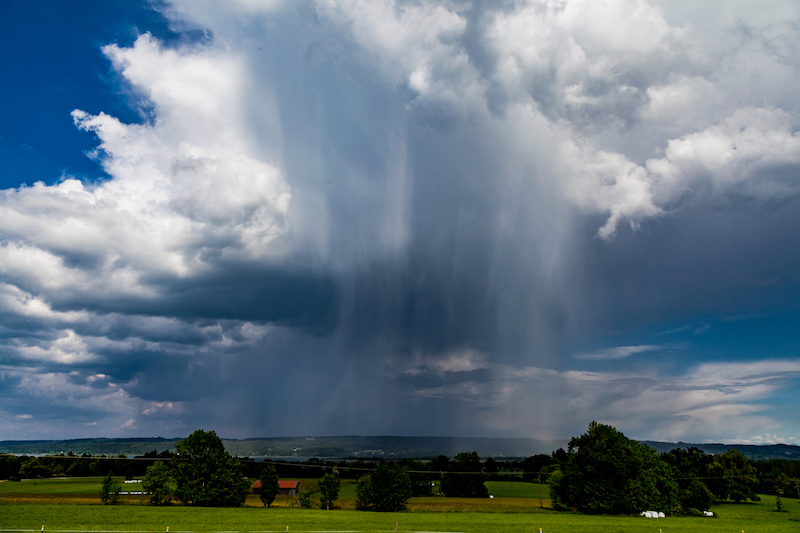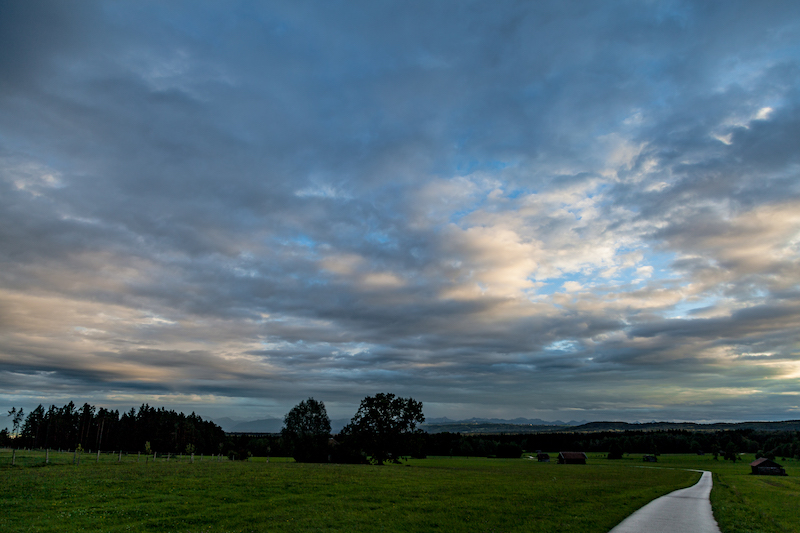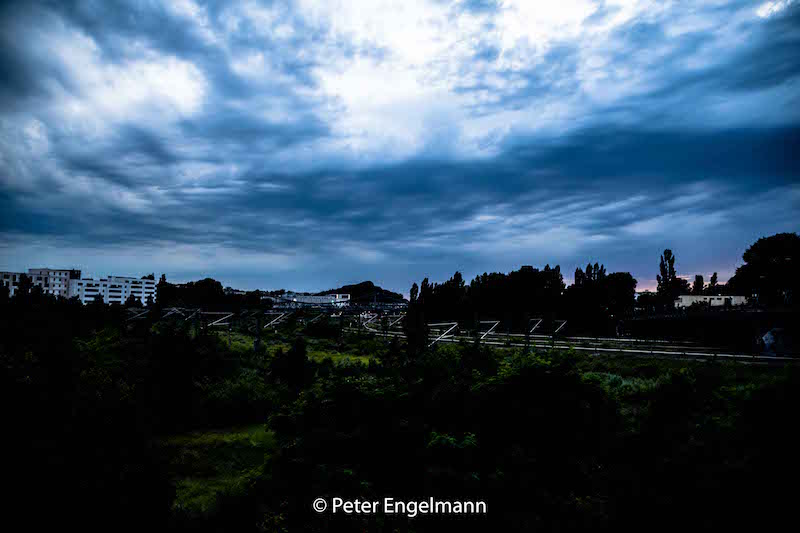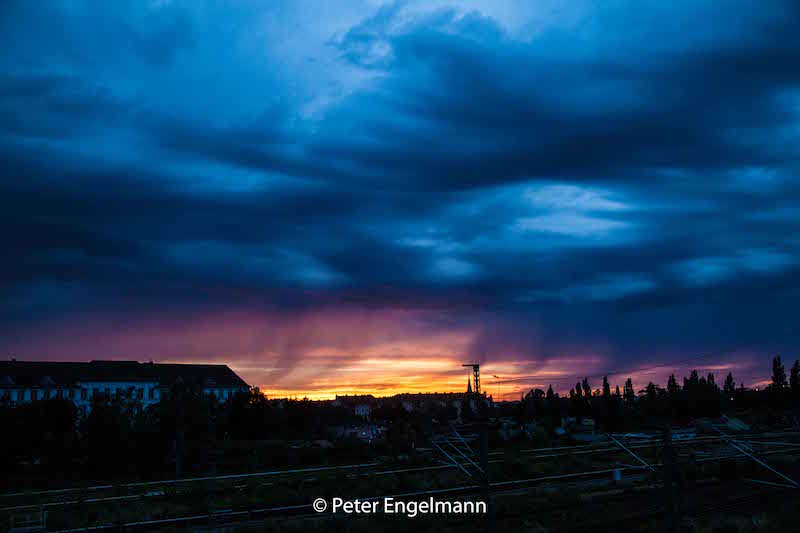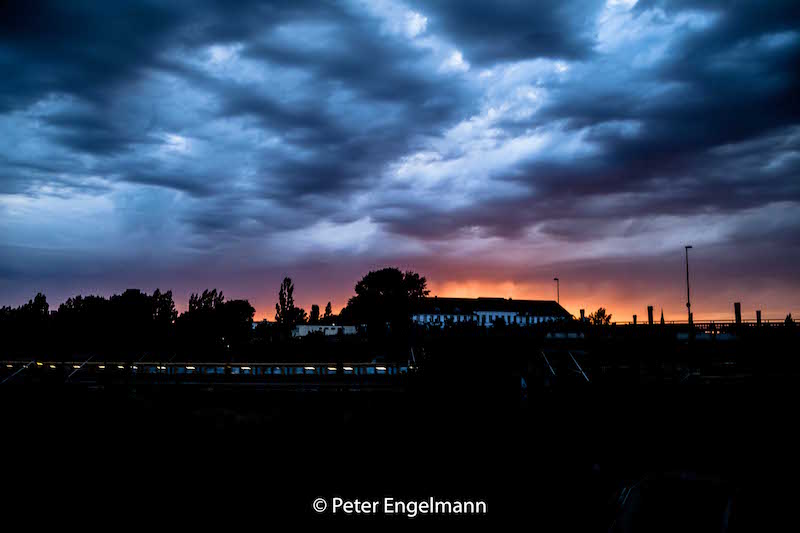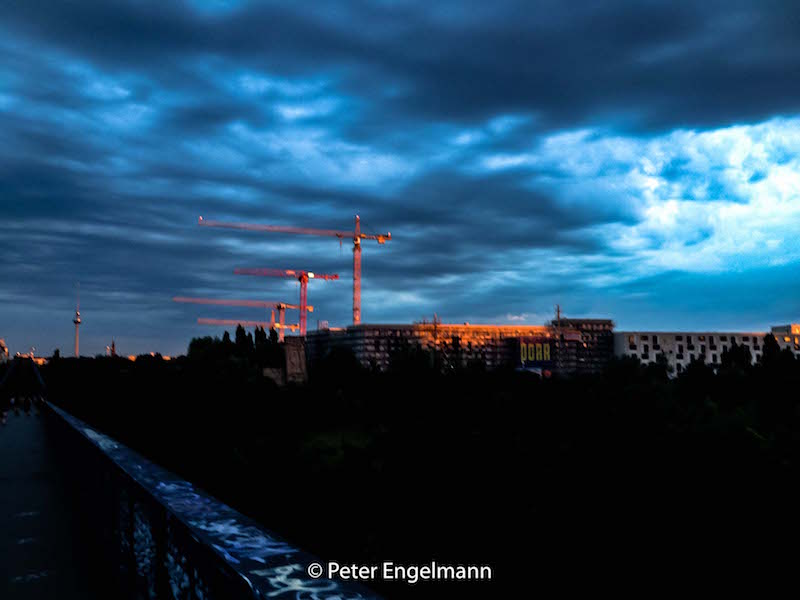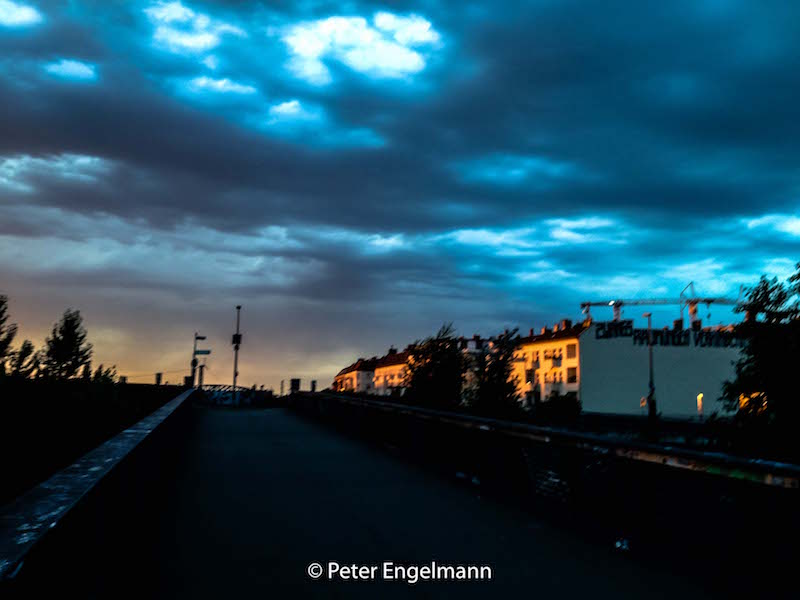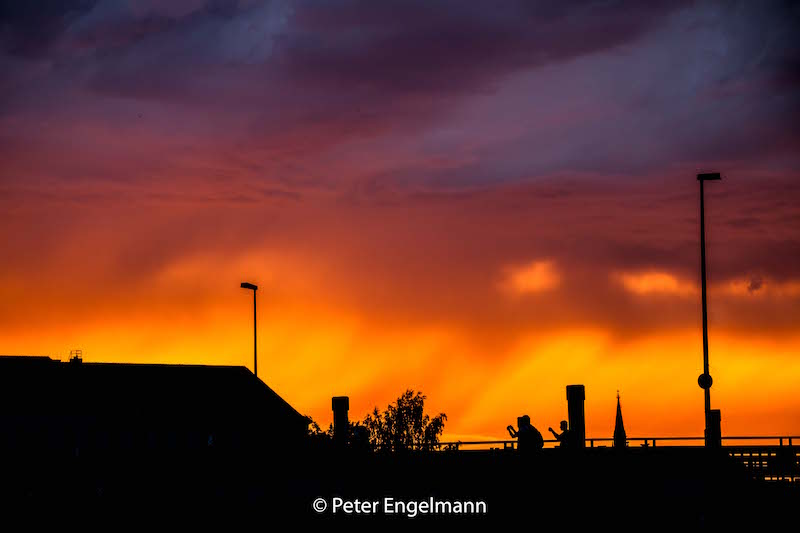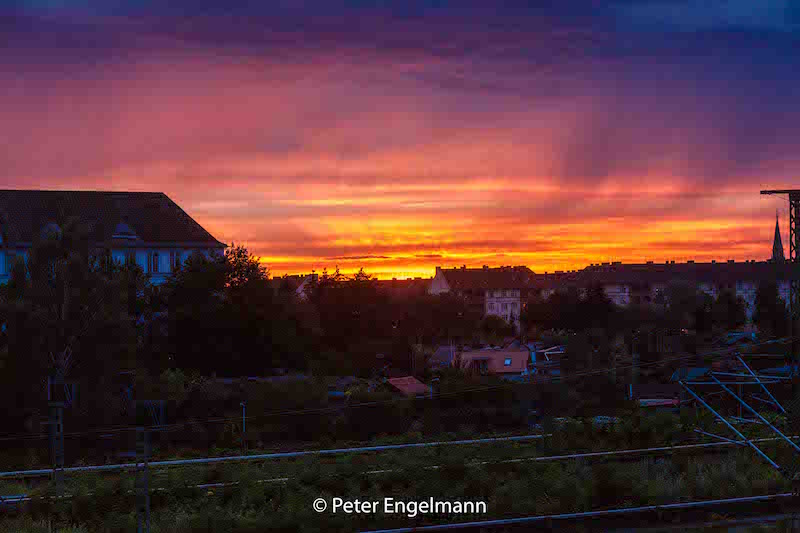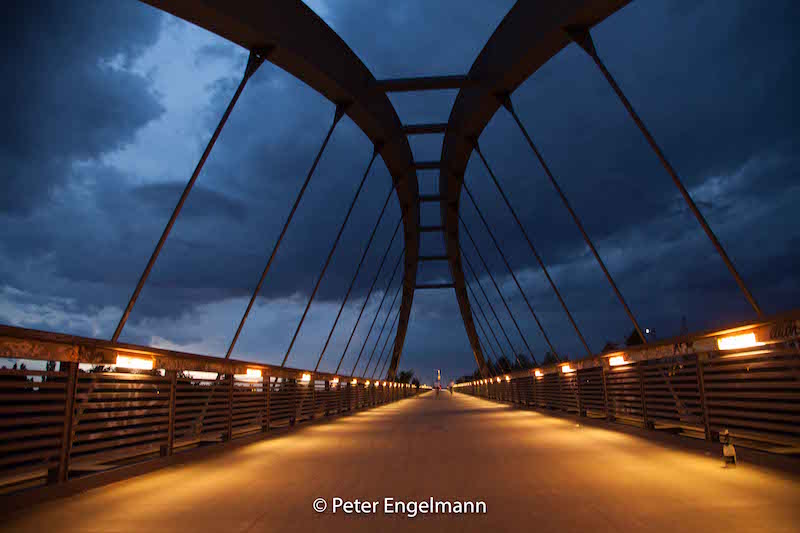Ein Wasserfall im Himmel: Gewitter im Mai und Fallstreifen
Mai ist oft die Zeit kurzlebiger Gewitter und kühlerer Regentage in Mitteleuropa. Seit einigen Jahren jedoch treten auch vermehrt Extremwettersituationen mit Sturzfluten und sogar Tornados auf. 2018 war besonders ungewöhnlich, da es bereits im April neue Temperaturrekorde gegeben hat. Es war in vielen Regionen zu trocken und ist es immer noch. Eine großes Problem ist der Umstand, dass langanhaltender Regen immer mehr fehlt. Dieser Landregen gerade im Mai ist normalerweise typisch für unser Wetter. Auch wenn er für Touristen wenig erfreulich ist, so ist er doch für die Natur und die Landwirtschaft lebenswichtig. Das hat sich geändert. Wie es die Klimaforscher vorhergesagt haben, kommt es stattdessen wenn zu Schauern und Gewittern mit kurzzeitigen Sturzfluten.
Ich erinnere mich noch, dass der Mai kein sonderlich warmer Monat war, als ich noch jünger war. In manchen Jahren lag sogar in den Alpen noch viel Schnee. In der Mitte des Monats war es oft kalt. Doch dieses Jahr war der ganze Mai eher wie Mittsommer statt wie ein Frühlingsmonat.
In Süddeutschland endete die trockene Periode im Mai, als vermehrt Schauer und Gewitter auftraten.
Das erste Gewitter in meiner Umgebung, dem Ammersee in Oberbayern entwickelte sich am 12. Mai.
Dieses Gewitter war sehr beeindruckend, denn die tiefstehende Sonne beleuchtete die Wolken und den Regen von unten. Der Mai ist genau für solche Aufnahmen von Gewittern, da das Licht günstiger als im Hochsommer ist. Ebenso ist die Luft oft klarer als im Juli. Zudem ist das durch die Lichtbedingungen eine gute Zeit, Niederschlagsstreifen unter den Schauerwolken zu fotografieren. Diese Fallstreifen lassen manchmal sehr interessante Muster entstehen.
An den folgenden Tagen kam es zu weiteren Gewittern. Die Wetterdienste hatten eine harte Zeit im Mai. Einige Male wurde warmes, stabiles Wetter vorher gesagt. Doch immer wieder kam es anders. An Pfingsten, dem 20. und 21. Mai, sollte es warm und trocken werden, aber es folgten weitere Schauer und Gewitter. Insbesondere der 20. Mai sollte eigentlich warm und trocken sein. Stattdessen war es ein dunkler Tag, wo es durch einen heftigen Gewittersturm sogar zu einer Sturzflut in einem kleinen Ort zwischen Murnau und Garmisch-Partenkirchen kam. Bereits am 18. Mai musste ein Open-Air Event in Fürstenfeldbruck in der Nähe von München wegen eines Unwetter abgesagt werden.
.
Hier sieht man nun, was am 20. Mai, einem Sonntag, geschah: Am Nachmittag war der Himmel voller dunkler Wolken und es regnete. Im Bild sieht man den Hohen Peissenberg im Hintergrund, an dem Nebelfetzen hochzogen. Im Süden war ein Gewitter zu sehen, das zu der besagten Überflutung führte. Erst am Abend beruhigte sich das Wetter.
Der 21. Mai begann mit Nebel. Eine tief hängende Schicht hing zwischen den Bergen und dem davor liegenden Land. Durch die starke Sonne lichtete sich der Nebel rasch und der Himmel wurde klar: 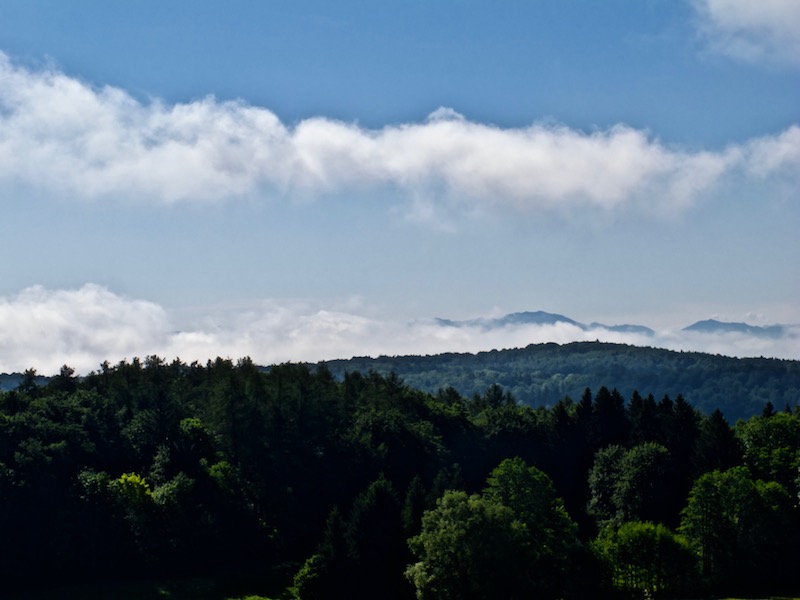
Die Luft war immer noch feucht und die Sonne heiß – perfekte Bedingungen für die Entwicklung weiterer Gewitter. Am Nachmittag bewegte sich eine starke Gewitterzelle Richtung Ammersee. Dieses Gewitter erwies sich wegen der Fallstreifen und einem Regenbogen als sehr interessantes Motiv.
Es fiel auf, dass dieses Jahr die Gewitter oft in ungewöhnliche Richtungen zogen. Manchmal kamen sie aus Südosten und bewegten sich nach Südwesten oder sie zogen von Norden nach Süden. Meistens ziehen die Wettersysteme in Europa eigentlich von West nach Ost. Eine ungewöhnliche Konstellation von Drucksystemen war die Grund für diese Entwicklungen und auch für die lange Trockenheit. Zu diesem Zeitpunkt ahnte allerdings noch niemand, welche Dimensionen diese Anomalie 2018 annehmen würde.
Das Gewitter am 21. Mai kam für einige Zeit näher, stoppte dann aber scheinbar. Ein Grund dafür ist, dass der See das lokale Wetter beeinflusst.
In so einem Fall ist es immer gut, schon im Voraus ein paar gute Aussichtspunkte zu kennen. Das machte es leichter, die Wetterentwicklungen zu verfolgen.
Eine höhere Position in der Landschaft war besonders hilfreich, den Regenbogen zu entdecken, der sich während des Gewitters entwickelte.
Anfangs war dieser Regenbogen kaum zu sehen, wurde dann aber stärker.
Das Besondere an diesem Tag war aber die Entwicklung im oberen Teil der Gewitterwolke.
Es waren nicht nur die üblichen Fallstreifen unter der Wolke zu sehen, sondern es war ganz klar zu erkennen, dass der Regen auch aus den oberen Etagen in der Wolke fiel.
Es war tatsächlich ein Wasserfall im Himmel.
Das unbeständige Wetter dauerte an. Das Titelbild dieses Beitrages wurde ein paar Tage später, am 24. Mai, aufgenommen
In der Mitte Deutschland folgten im Mai weitere dramatische Ereignisse mit enormen Hagelmengen und Überflutungen an einigen Orten.
